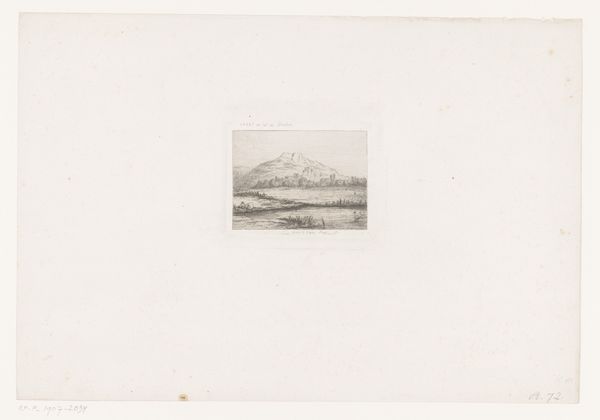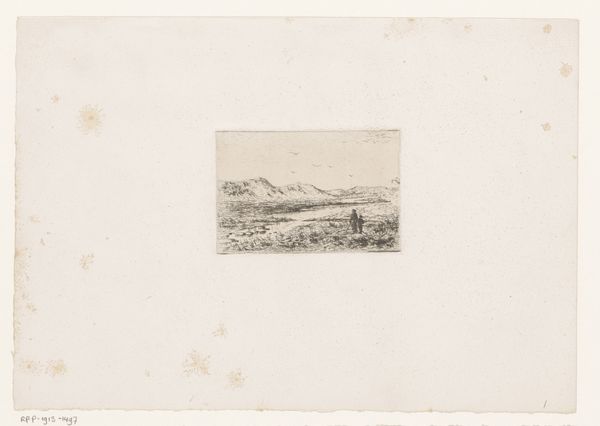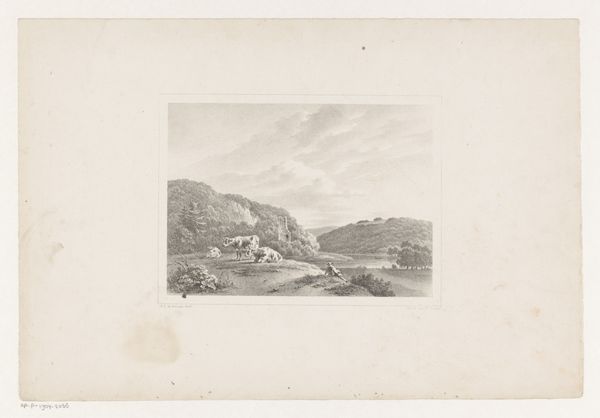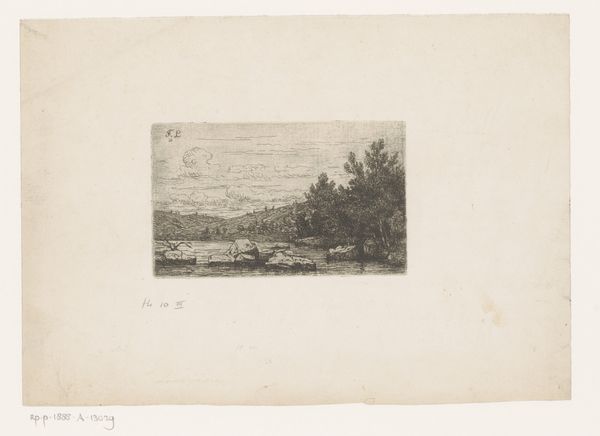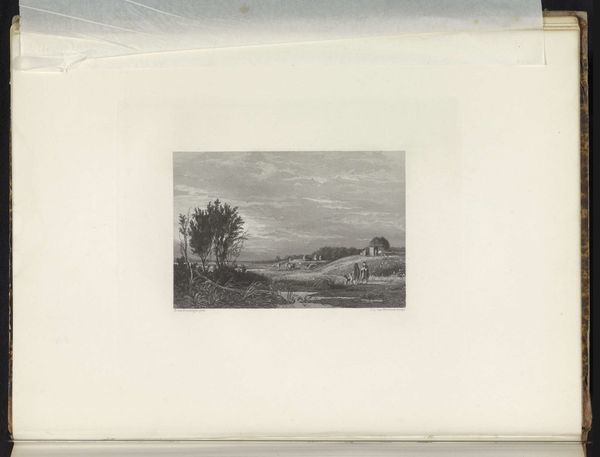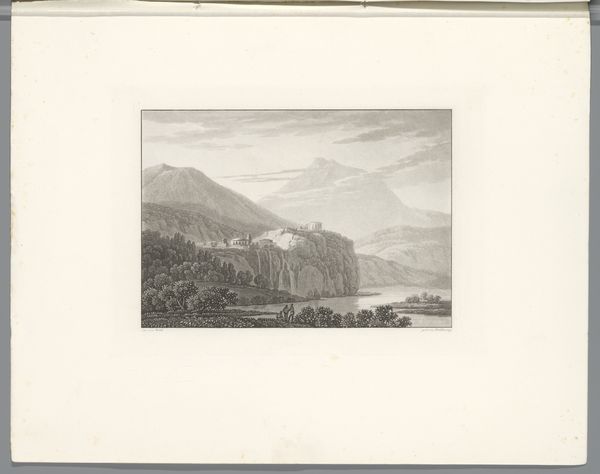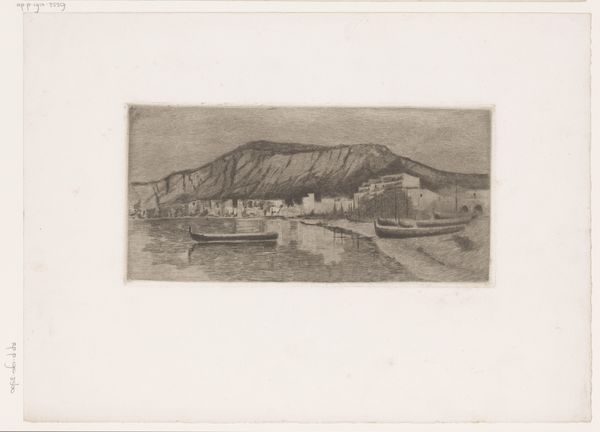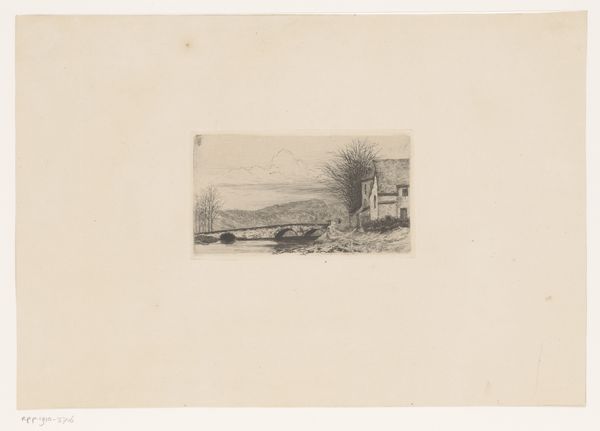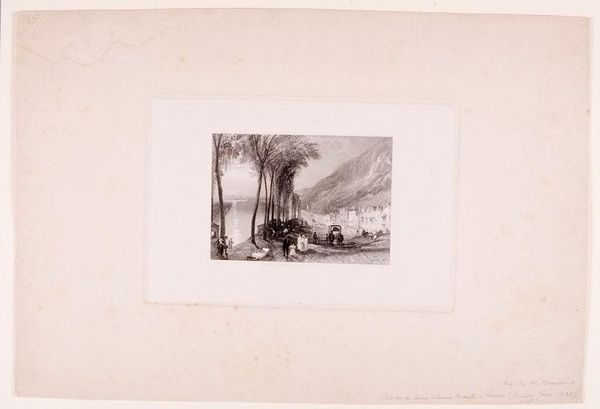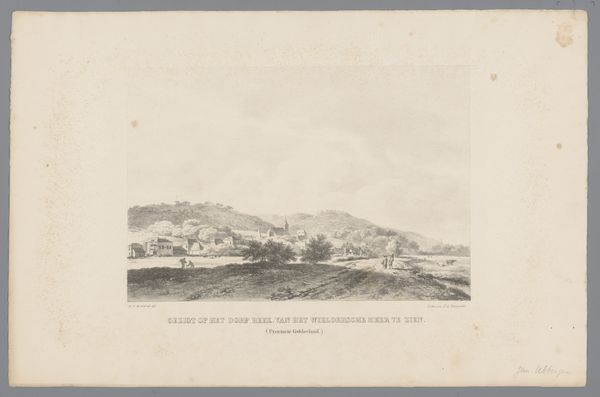
Dimensions: height 79 mm, width 118 mm
Copyright: Rijks Museum: Open Domain
Curator: Look at this intriguing print titled "Berglandschap met dorp aan het water nabij Lorch," which roughly translates to "Mountain Landscape with a Village on the Water near Lorch." It dates from between 1852 and 1906, placing it firmly within a period of significant social and economic change. It’s an etching. Editor: My first impression is one of serenity, a sort of contained majesty. The composition leads the eye smoothly from the still water in the foreground to the distant mountains, with the village acting as a fascinating focal point nestled within the landscape. Curator: Etching is a particularly fascinating medium. The process of biting into the metal plate with acid, and the subsequent inking and printing… it allows for the relatively easy reproduction of images, making them accessible to a broader audience. Prints like this democratized art consumption. We can assume these scenes from Lorch were destined for a rising merchant and middle class who perhaps visited as tourists. Editor: The romantic undertones are visible, aren't they? The almost ethereal rendering of the mountains and the subtle suggestion of human presence amidst the vastness of nature—the strategic placement of the town—it evokes a feeling of harmony, of mankind living in accord with its environment. Even the lines, though delicate, impart structure and stability. Curator: It’s tempting to get caught up in the aesthetics, but let’s think about what went into making this image circulate. The availability of these prints fueled the romantic tourism trade in regions like Lorch. The act of making and distributing images contributes to the economy of desire surrounding the places they depict. It becomes both image and commodity. Editor: Indeed, I concede that is an interesting way to look at the relationship, but what makes the work successful is still the way it evokes emotion, the artist manipulates line, light, and form to create an emotional response. The semiotics are essential here! Even the choice to render it in grayscale adds to this sense of quiet reverence. Curator: I appreciate the skill. The artist certainly had to choose their line-work deliberately, as those fine lines make the image and communicate both the immediate picturesque moment as well as to contribute to industry around tourism, leisure and art production of the time. Editor: Seeing this detailed print in this particular context, with the artist's command of perspective, I notice something new each time. Curator: Yes, and I see it connected to the world of makers and users. It's a compelling bridge of time.
Comments
No comments
Be the first to comment and join the conversation on the ultimate creative platform.

